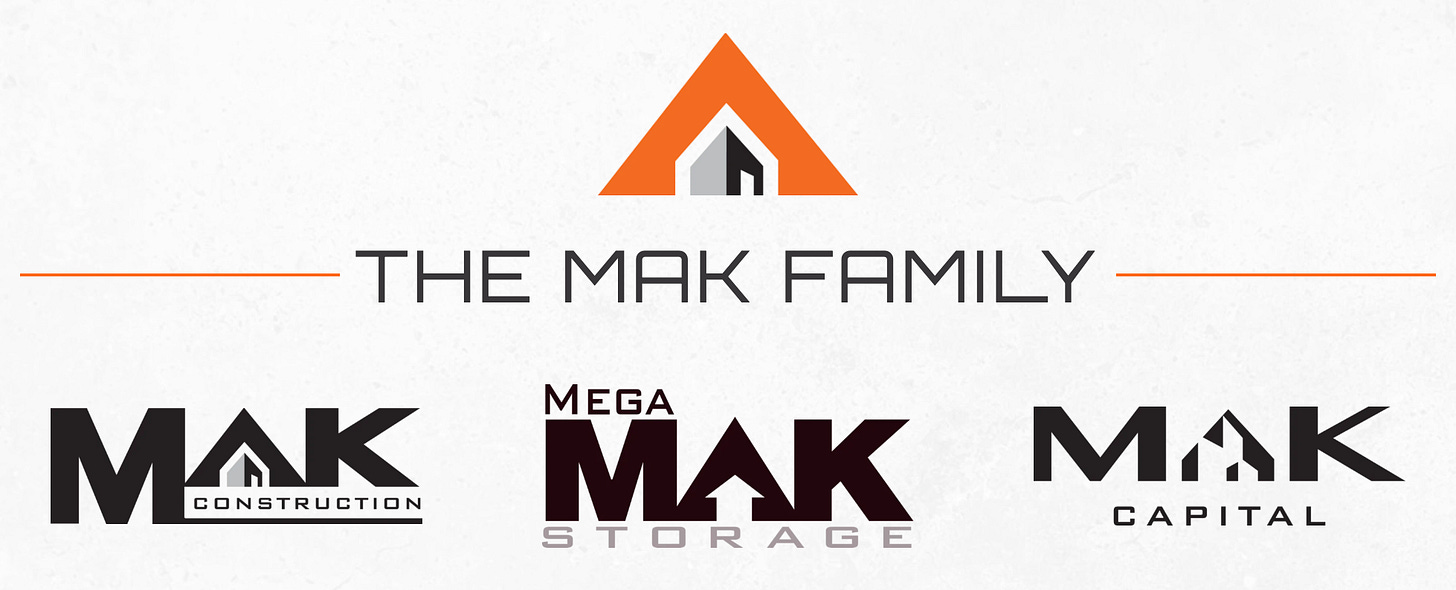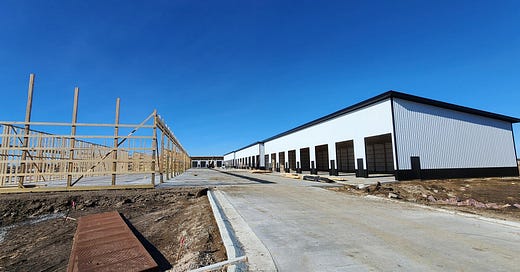The Ultimate Guide to Vertical Integration in Real Estate
How Developers and Investors Build Wealth by Controlling Every Stage of the Deal
Welcome to Unfollow the Herd, the newsletter teaching 5K+ readers how to build wealth with real estate and blue-collar businesses.
Most developers never build real wealth because they’re playing the wrong game.
They spend years assembling a deal—raising capital, securing entitlements, lining up financing—only to hand control over to outside contractors, lenders, and property managers.
Then they wonder why their projects run over budget.
Why construction timelines drags on.
Why their margins get squeezed.
Here’s the truth:
If you don’t own the process, you don’t own the profits.
That’s why vertical integration—where you control everything from acquisitions to construction to property management—is one of the most powerful advantages a real estate developer can have.
I’ve seen this firsthand.
We’re running multiple developments right now, and the difference between owning the execution versus relying on outside players is night and day.
Let’s break down the concept of Vertical Integration.
What is Vertical Integration in Real Estate?
A lot of people think real estate developers and builders are the same thing.
They’re not.
Most developers don’t build—they put the deal together, secure entitlements, line up financing, and hire a general contractor (GC) to execute the construction.
Most builders don’t develop—they get hired by developers to build the project, but they don’t own the land or control the vision.
Developers make their money on the deal.
Builders make their money on the build.
Both models work—but when you separate development from construction, you create friction in the process:
The developer wants to build as efficiently as possible to maximize their return.
The GC wants to increase their margin, which often means change orders, padded budgets, and timeline extensions.
When your profits are tied to the speed and efficiency of construction, but someone else controls construction, you’ve already lost.
They rely on:
General contractors to handle construction.
Institutional capital to finance the deal.
Third-party property managers to oversee leasing and operations.
That model works, but it also means:
You’re paying a premium for every outsourced service, eating into your margins.
You’re at the mercy of other people’s schedules, slowing down execution.
You don’t own the process, which means you don’t fully control your outcome.
A vertically integrated firm brings the entire process under one roof. Instead of depending on external contractors, lenders, and managers, everything is handled in-house.

We built MAK to be a vertically integrated company, meaning we control:
✔ Acquisitions – Sourcing, analyzing, and securing deals internally instead of relying on brokers.
✔ Construction – Managing the build process with an in-house team instead of hiring general contractors.
✔ Financing – Structuring capital in-house, reducing dependency on institutional investors.
✔ Property Management – Handling leasing, maintenance, and operations instead of outsourcing to third-party managers.
When you control these functions, you increase efficiency, reduce costs, and execute faster—which is why vertical integration is a competitive advantage in real estate.
Why Most Developers Lose Control of Their Own Deals
Right now, we’re 30 percent through construction on one of our biggest projects.
We’re ahead of schedule, and that means we’re saving hundreds of thousands in interest, carrying costs, and lost time.
That only happens because we own the construction process.
If we had a third-party GC running the job:
We’d be waiting on their schedule, not ours.
We’d be paying more for materials and labor.
We’d have zero control over execution.
Most developers aren’t in control of their own projects.
The general contractor holds the leverage.
The institutional investors dictate the terms.
The banks call the shots.
That’s why so many developers struggle. They put together a project, raise capital, and then get caught in delays, cost overruns, and problems they don’t have the power to fix.
We don’t run our projects that way.
We develop.
We build.
We manage.
We don’t rely on outside contractors. We rarely work with institutional investors. We own every part of the process.
That’s why we’re able to execute faster and keep more of the profits.
The Institutional Money Trap
Another reason developers lose control is they take institutional money too soon.
Right now, we’re in the middle of two major development projects:
Project 1: We’re working with institutional investors and lenders, and it’s taken five months just to close the loan.
Project 2: We raised private money from six LPs. The deal got funded in ten days.
Same goal, two completely different outcomes.
Institutional investors can slow things down with compliance teams, approval processes, and multiple decision-makers who aren’t as urgent about your timeline as you are.
But Private LP investors?
If the deal makes sense, they cut the check and move forward.
That’s why we prefer private capital and in-house execution.
Institutional money makes sense on massive deals, but when you’re trying to move fast and maximize returns, it can make things challenging and slow.
Why LPs Prefer Vertically Integrated Operators
A lot of LPs (passive Limited Partner investors) are sitting on the sidelines right now.
Too many syndicators overpaid for deals in 2021-2022 and got crushed when rates went up. They took massive fees upfront, relied on third-party operators to execute, and left their investors holding the bag.
Now, LPs are looking for operators who control their deals—not middlemen who outsource everything.
That’s why many LPs are shifting their capital toward vertically integrated real estate firms.
When you own the acquisition, the construction, and the management, you:
Eliminate unnecessary fees and middlemen.
Execute faster, reducing holding costs.
Maintain higher margins, making deals safer for investors.
We saw this firsthand.
Our Hartford Luxury Storage deal raised $2.5 million in ten days from LPs who already knew we controlled the build and execution.
They didn’t need a pitch deck. They saw the numbers and trusted that we weren’t dependent on third-party GCs, managers, or slow institutional capital.
LPs don’t just want better assets—they want better operators who actually control their projects. That’s why vertical integration isn’t just a developer’s advantage—it’s a massive selling point for investors, too.
The Trade-Offs of Vertical Integration
Vertical integration isn’t for everyone.
It’s capital-intensive—you need resources to build a team and manage multiple business units.
It’s harder to scale—you might get stuck in the weeds of a project instead of moving on to the next deal.
It requires expertise in multiple disciplines—construction, finance, leasing, and operations.
But the advantages far outweigh the challenges.
When you own the process, you:
✔ Capture more profit—no middlemen taking a cut.
✔ Control execution—no waiting on outside vendors.
✔ Move faster—fewer approvals, faster timelines.
For us, the choice is clear.
We don’t want to depend on outside contractors. We don’t want to be at the mercy of institutional investors. We don’t want to lose months waiting on banks and slow decision-makers.
We want full control over our deals.
Because in real estate, the people who control the process control the profits.
And the people who don’t?
They’re working for the ones who do.
That’s all for today. Drop your questions in the comments!
Marc Kuhn,
CEO at MAK Capital
P.S. If you want to learn how accredited investors build passive wealth with multifamily & luxury storage real estate — check out our projects and reach out here to learn more.





Excellent article, very informative, very helpful.
Interesting article, Marc. Thanks.